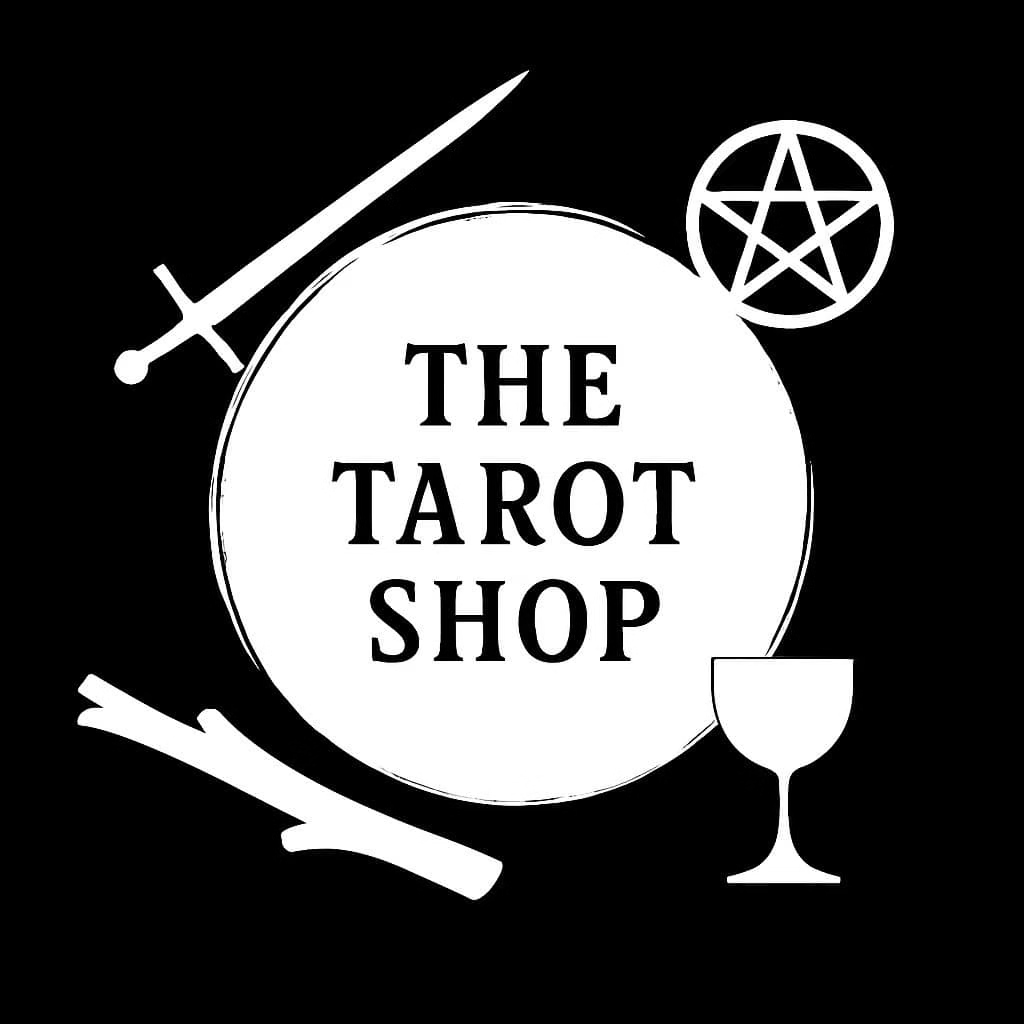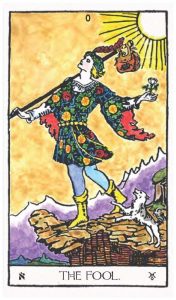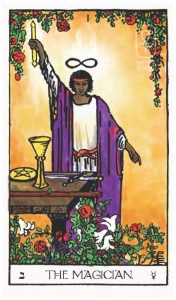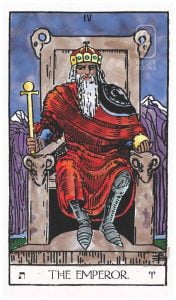What are the Major Arcana?
Tarot packs are traditionally divided into five main sections. While the Minor Arcana offers insight into daily life, the Major Arcana tells a bigger story — one of growth, transformation, and deep personal shifts.
The Major Arcana – 22 cards that represent major turning points and spiritual lessons.
The Minor Arcana – The remaining 56 cards explore emotions, thoughts, actions, and the material world which I explain in a separate post [HERE]. However, for the purpose of context let’s break down the Minor Arcana briefly so you can see how it all fits together.
Cups (Hearts) – These relate to emotions, relationships, and intuition. They reflect the people, places, and things we care deeply about.
Pentacles (Coins) – These focus on money, work, and the material world — essentially, how we create and sustain physical security.
Wands (Staves) – These cards represent action, energy, and ambition. Therefore, they often point to work, creativity, and growth.
Swords – These deal with thoughts, beliefs, and perceptions. As a result, they often speak to mental clarity, conflict, and decision-making.
Although the Minor Arcana brings nuance, it’s the Major Arcana that reveals whether you’re facing a big life shift — or simply navigating the everyday.
What makes the Major Arcana different?
The Major Arcana forms the spiritual backbone of the tarot. There are 22 cards, numbered from 0 to 21, and each one reflects a powerful life lesson or transformation.
Some readers use only these cards in a reading, especially for spiritual insight or big-picture questions. That’s absolutely valid.
However, I prefer to use the full 78-card deck. This way, I can see if a reading is dominated by Major Arcana (signalling a major life chapter), or if it’s more rooted in everyday concerns. The contrast between the two is often what makes a reading so revealing.
Where do these cards come from?
The Major Arcana has deep symbolic roots. The version we use most often today — created by Arthur Edward Waite and illustrated by Pamela Colman Smith in 1909 — was inspired by the teachings of the Hermetic Order of the Golden Dawn.
Despite their historical origins, the messages within these cards remain timeless. In fact, they still mirror the life cycles we go through — loss, growth, renewal, and wisdom gained through experience.
What’s the journey about?
The Major Arcana tells the story of a soul’s evolution — often referred to as The Fool’s Journey. It begins at zero (The Fool) and ends at twenty-one (The World). Along the way, each card marks a step in personal growth.
For example, you start with innocence and potential (The Fool), move through learning and trials (like The Magician, The Lovers, The Tower), and eventually reach wholeness (The World).
Therefore, these cards can act as a mirror to your current stage in that journey — which is why many people find them so transformative.
How to start working with the Major Arcana
There’s a lot written about these cards, but if you’re just starting out, my best advice is: don’t overthink it. Focus on one card at a time. Sit with it. See what feelings or thoughts arise.
Use keywords as prompts, but let your intuition guide you too. In fact, meditating on one card per day can really deepen your understanding.
As you do this, you’ll begin to notice patterns. Each card has a rhythm, a voice — and soon enough, they’ll start speaking to you in their own language.



